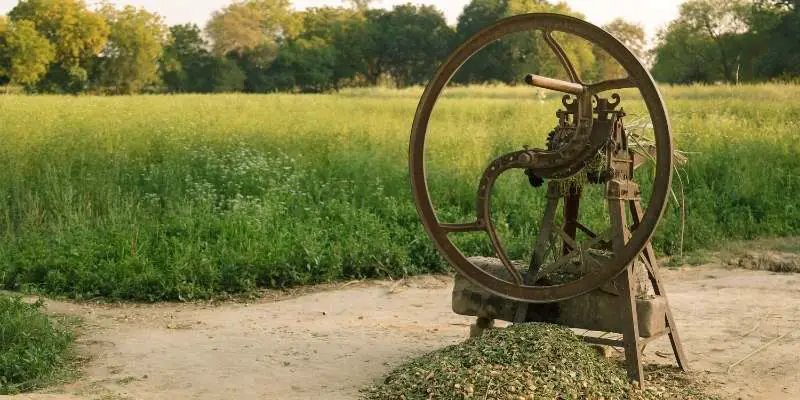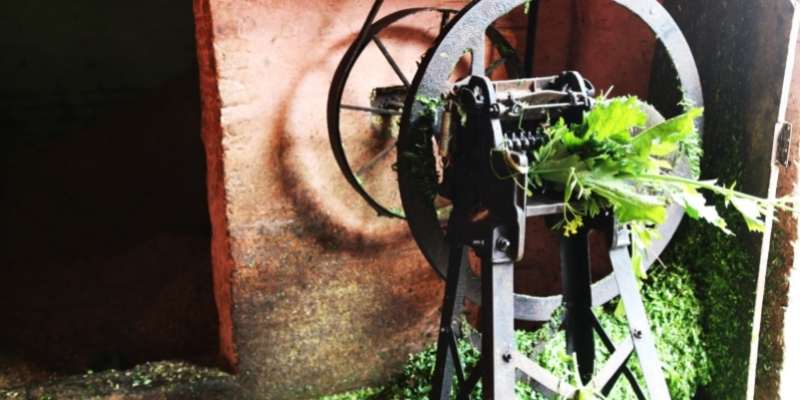Everyone in livestock farming knows the importance of a chaff cutter but struggles to decide which one they need. With different types of chaff cutters, it is necessary to select one as per the scale of operations and ease of use.
Hay is an essential energy source for ruminants which ensures correct rumen function. To avoid wastage and aid digestion, hay should be chopped before giving it to cattle. That’s when chaff cutters come to play, chaff cutters are built to chop the chaff into small pieces to aid chewing and promote healthy digestion.
Types of Chaff Cutter
More than one type of chaff cutter is available on Amazon and other agricultural equipment stores. Different types of chaff cutters are
- Hand-Operated Chaff Cutters
- Electric Chaff Cutters
- Mini Chaff Cutters
- Manual Chaff Cutters
- Automatic Chaff Cutters
Small dairy farms with no more than five cows do not need advanced, large chaff cutters. A chaff cutter can cut up to 100 kgs of hay an hour to one ton an hour depending on the size and engine. Let’s discuss different types of this machinery one by one.
Hand-Operated Chaff Cutters

With each passing year, this chaff cutter is becoming obsolete and used mostly in rural areas by farmers with limited budgets. This cutter features a tray to feed the forage to the blade, a curved blade on a spring lever, an anvil, and a frame.
In working, one hand is used to move the cutting blade whereas the other hand pushes the feed through the tray. The curved cutting blade progressively chops the fodder as a thin layer of forage is laid on the anvil.
As it stands, this is a labor-intensive process requiring quite manpower and time to get done. Large farms do not seek such a chaff cutter with low yields. The average RPM is 35 whereas the industrial cutter surpasses 1000 RPM in the cutting process.
It is better suited for farms with around two or three cows where there is lesser fodder to chop. As chopping hay with this cutter can be quite time-consuming, most farm owners are going for automatic ones. Best for round hay bales and square hay bales.
Electric Chaff Cutters

This chaff cutter is more innovative and advanced than the previous one. Farms with more than five cows can opt for this option to save time and labor costs. Buying mechanized chaff cutters is a sensible and best decision for dairy farm owners as high-producing dairy cows can consume up to 30-35 pounds of baled hay a day.
Electric chaff cutters are prized for the speed and simplicity of their functions. Moreover, It can cut 100 KGs of forage in 10 minutes. This speed significantly cuts down time and effort as compared to manual feed preparation.
That’s not it! An individual can easily adjust the cutting size in relation to density and type of forage. You can match the stem size and forage type to feeding requirements.
Mechanized Chaff Cutters are rapidly replacing hand-operated cutters because of ease of use. No one wants to spend hours operating the blade manually. This cutter does hours of work in minutes.
Mini Chaff Cutters
As the name suggests, Mini Chaff Cutters are lightweight, portable, and less expensive than the larger manual feed systems. Best suited for small-scale farming set-ups, the outcome is influenced by the moisture content and the raw feed materials.
Mini Chaff Cutter requires 2-3 kW power with approximately 2000 rpm motor speed and delivers up to 1000 t/hr of processed cuttings. Due to high yields, mini motorized chaff cutters are sold at a higher price than hand-operated ones.
Manual Chaff Cutters
The portable and lightweight manual system chaff cutters are perfect for small home dairies with minimum forage requirements. These cutters are used for straw, wheat, and grass cutting. The manual chaff cutters lack a mechanized belt system to deliver feed to the machine, the fodder is drawn manually via the feed chute instead.
Delivering feed manually just adds to the work when chopping large amounts of chaff. Automatic feeding systems on chaff cutters save a lot of time and effort but also require a huge investment.
This kind of system is somewhat successful when a farm has no more than two cows. Even then, it would take a lot of time for processed cutting. It is usually bought by farmers just entering the livestock farming with fewer animals and limited budgets.
Automatic Chaff Cutters
This type of cutter features the mechanized belt system and advanced feed mechanism to deliver the feed to the cutter automatically. The automated system is best suited for large-scale farming set-ups.
Automatic chaff cutters are equipped with a unique feed roller device and a special gearbox to optimize cutting output, adjust processing lengths, and have multiple power options such as motors, diesel engines, and tractors.
With efficient cutting options, a farmer can chop between 3 and 10 tons per hour. Automatic Chaff cutters, being versatile, can adapt to several power sources and facilitate large yields of cut fodder.
The power and capacity of the automated system differ from the standard freestanding unit to the heavy-duty tractor-operated versions. Feed is delivered to the cutting heads with conveyor belts for compression and chopping.
Automatic cutters take the labor out of the work and provide high-capacity cutting yields in a short time. These cutters are famous for efficiency and saving time.
Advantages of Chaff Cutters
Have you ever wondered, do you really need a chaff cutter? The answer is yes. We can state more than one reasons to explain our stance.
Chopped hay saves a lot of fodder from getting wasted by being trodden underfoot. Cows struggle to eat large strands of hay.
Small-sized hay increases the digestion rate along with nutritional absorption.
With the increased rate of digestion and nutrients absorption, the cow will gain weight more efficiently.
Key Takeaway
Different types of chaff cutters are available in the market today, the right one for you would be the one that meets the requirements of the farming operations.







